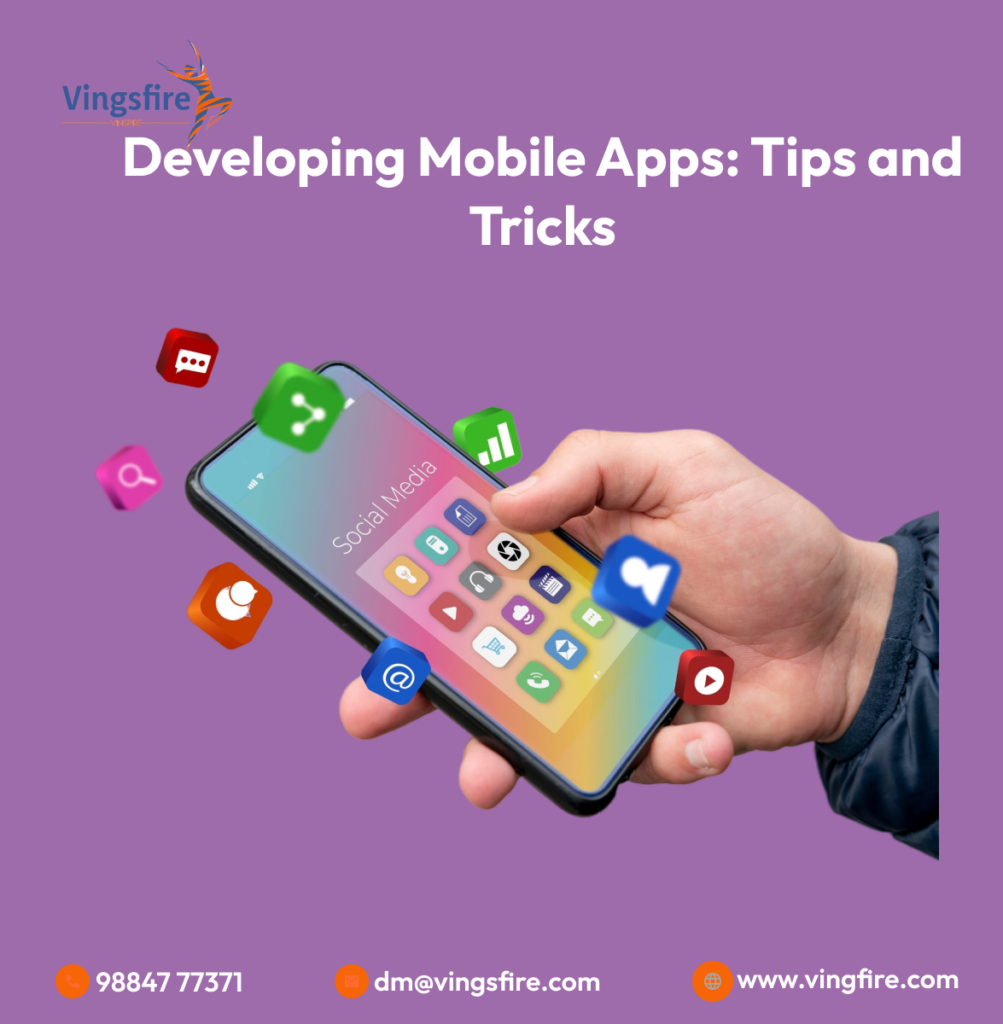
Introduction:
In today’s digital age, mobile applications have become an integral part of our daily lives. With the increasing demand for innovative and user-friendly apps, the process of developing mobile apps has evolved into a complex yet exciting endeavor. Whether you’re a seasoned developer or just starting out, mastering the art of mobile app development requires continuous learning and adaptation. In this comprehensive guide, we’ll explore a plethora of tips and tricks to help you navigate the dynamic landscape of developing mobile apps.
Understanding the Basics of Developing Mobile Apps:
Before diving into the intricacies of mobile app development, it’s essential to grasp the fundamentals. Developing mobile apps involves creating software applications specifically designed to run on mobile devices such as smartphones and tablets. This process typically encompasses ideation, design, development, testing, and deployment. With the prevalence of multiple operating systems like iOS and Android, developers often face the challenge of ensuring compatibility across various platforms.
Choosing the Right Development Approach:
One of the initial decisions developers must make is selecting the appropriate development approach. There are several methodologies to consider, including native, hybrid, and cross-platform development. Native development involves building apps tailored to a specific platform using languages like Swift for iOS and Java for Android. While native apps offer optimal performance and integration with device features, they require separate codebases for each platform, leading to increased development time and resources.
Hybrid development, on the other hand, leverages web technologies such as HTML, CSS, and JavaScript to create apps that can be deployed across multiple platforms. Frameworks like React Native and Ionic facilitate hybrid app development by enabling developers to write code once and deploy it everywhere. While hybrid apps streamline the development process and reduce time to market, they may sacrifice performance and native user experience.
Cross-platform development bridges the gap between native and hybrid approaches by allowing developers to write code in a single language and deploy it across multiple platforms. Frameworks like Xamarin and Flutter empower developers to build high-quality apps with native-like performance and user experience while maximizing code reuse. However, cross-platform development may entail a learning curve and limitations in accessing platform-specific features.
Optimizing User Experience:
Regardless of the chosen development approach, prioritizing user experience (UX) is paramount in mobile app development. An intuitive and visually appealing interface can significantly enhance user satisfaction and retention. When designing the user interface (UI), consider factors such as simplicity, consistency, and accessibility. Utilize standard design patterns and conventions to ensure a seamless navigation experience across the app.
Furthermore, optimize app performance by minimizing loading times, reducing battery consumption, and optimizing resource utilization. Implement caching mechanisms, lazy loading, and asynchronous operations to enhance responsiveness and fluidity. Conduct thorough testing across different devices and screen sizes to identify and address potential compatibility issues.
Implementing Effective Monetization Strategies:
Monetization plays a crucial role in the success of mobile apps, allowing developers to generate revenue and sustain their ventures. There are various monetization models to consider, including freemium, in-app purchases, subscription-based services, and advertising. Determine the most suitable monetization strategy based on your app’s target audience, niche, and value proposition.
Freemium models offer free access to basic features while charging users for premium content or advanced functionalities. In-app purchases enable users to buy virtual goods, upgrades, or additional features within the app. Subscription-based services provide recurring revenue streams by offering premium content or exclusive benefits for a monthly or yearly fee. Advertising involves displaying targeted ads to users and generating revenue based on impressions, clicks, or conversions.
Whichever monetization model you choose, prioritize user engagement and satisfaction to foster long-term relationships and maximize revenue potential. Strike a balance between monetization and user experience to avoid alienating users with intrusive ads or excessive fees.
Leveraging Analytics for Data-Driven Decisions:
Data analytics plays a pivotal role in optimizing app performance, enhancing user engagement, and driving business growth. Implement robust analytics tools to gather valuable insights into user behavior, preferences, and interactions within the app. Track key metrics such as user retention, session duration, conversion rates, and revenue generation to evaluate the effectiveness of your app and identify areas for improvement.
Utilize A/B testing to experiment with different features, designs, and monetization strategies and measure their impact on user engagement and retention. Leverage user feedback and reviews to gain actionable insights and address user concerns or pain points proactively. Continuously monitor app performance and iterate based on real-time data to stay competitive in the ever-evolving mobile landscape.
Conclusion:
Developing mobile apps is a multifaceted process that requires careful planning, execution, and optimization. By following the tips and tricks outlined in this guide, you can navigate the complexities of mobile app development with confidence and success. Whether you’re aiming to create the next viral app or streamline business operations, staying abreast of emerging trends and best practices is essential for staying ahead of the curve. Embrace innovation, iterate relentlessly, and never underestimate the power of a seamless user experience in driving app adoption and retention. Happy coding!
